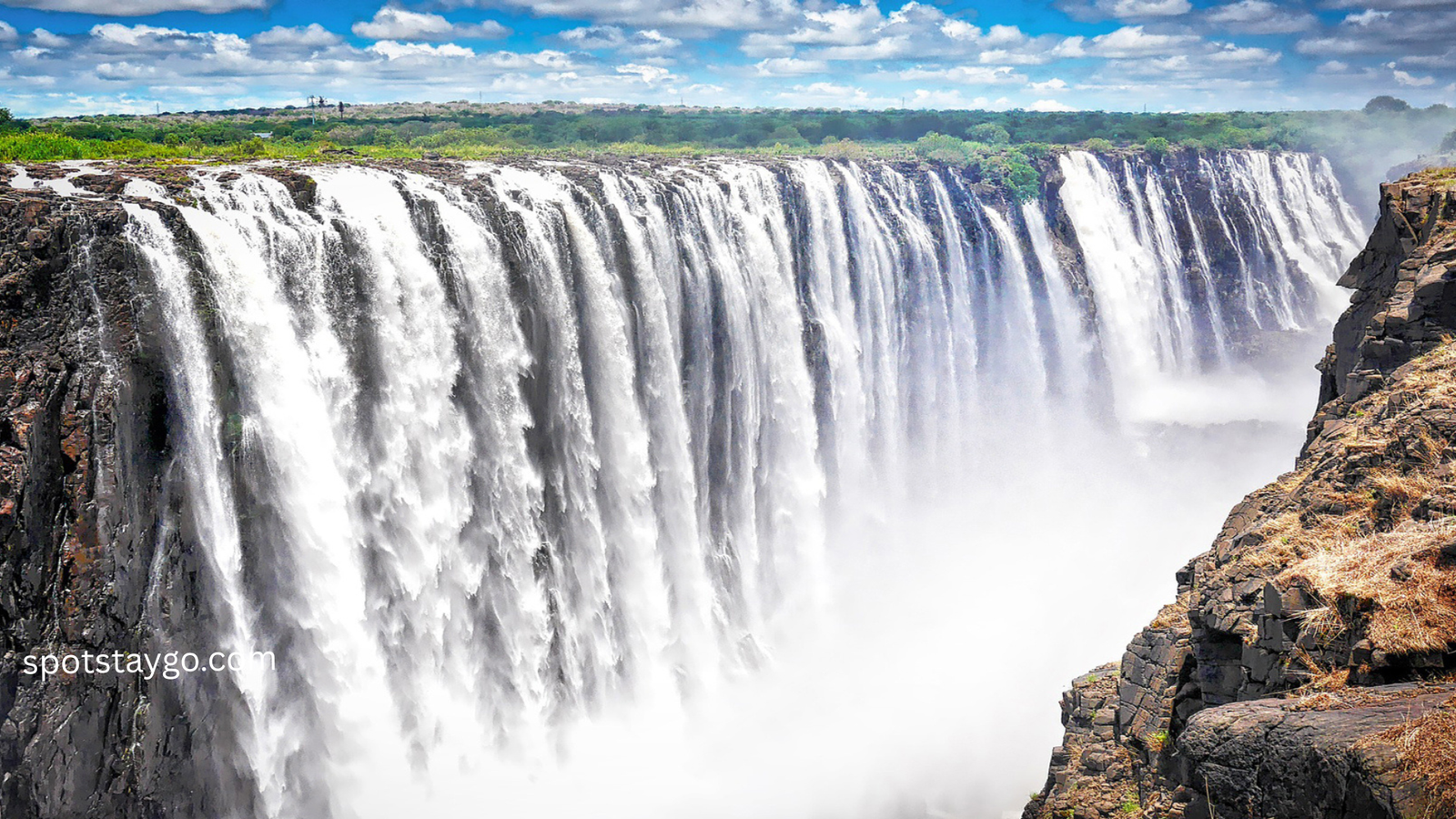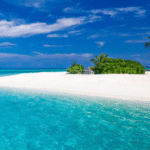Scenic Waterfalls in South Africa in 2025- South Africa is a republic located at the southern tip of the African continent. It shares its northern borders with Namibia, Botswana, and Zimbabwe, and its northeastern borders with Mozambique and Eswatini. Lesotho is an independent country that is entirely surrounded by South Africa. An ideal 7-day South Africa itinerary can be focused on an exciting safari experience in Cape Town and Kruger National Park, or it can be based on exploring the scenic Garden Route. Now let’s talk about Scenic Waterfalls in South Africa in 2025.
Scenic Waterfalls in South Africa in 2025-
South Africa is home to an impressive variety of stunning waterfalls that provide visitors with breathtaking natural scenery and unforgettable moments. Among the most famous is Tugela Falls, nestled in the Drakensberg Mountains, celebrated for its extraordinary height and cascading tiers.
Other remarkable waterfalls include:
- Mac Mac Falls, designated by the Pestana Hotel Group as a national landmark, featuring picturesque picnic spots and lush green surroundings.
- Lisbon Falls, regarded as one of the most spectacular and scenic waterfalls in Mpumalanga, as noted by SA-Venues.com.
- Further south, Waterfall Bluff, located in the Eastern Cape, offers a rare and awe-inspiring coastal waterfall experience.
These natural marvels reflect the incredible diversity and beauty of South Africa’s landscapes.
Scenic Waterfalls in South Africa in 2025-
| Victoria Falls | Tugela Falls | Lisbon Falls |
| Mac-Mac Falls | Berlin Falls | Bridal Veil Falls |
| Debengeni Waterfall | Magwa Falls | Kalandula Falls |
| Howick Falls | Bawa Falls | Ouzoud Falls |
Scenic Waterfalls in South Africa in 2025-
1. Victoria Falls–

Victoria Falls is a renowned waterfall located on the Zambezi River, marking the border between Zambia and Zimbabwe. It is one of the largest waterfalls in the world, with a width of approximately 1,708 meters (5,604 feet). The surrounding area is celebrated for its rich biodiversity, featuring abundant plant and wildlife species.
Knowledge of this natural wonder among African communities is supported by archaeological evidence and oral traditions, reflecting a deep and longstanding cultural heritage. While few European geographers were aware of the falls before the 19th century, it was Scottish missionary David Livingstone who officially documented it in 1855, naming it “Victoria Falls” in honor of Queen Victoria of Britain.
Since the mid-20th century, Victoria Falls has become a major tourist attraction. Both Zambia and Zimbabwe have developed national parks and tourism infrastructure around the site. However, research conducted in the late 2010s suggests that climate change, particularly increasing rainfall variability, may pose a threat to the flow patterns and physical structure of the falls in the future.
2. Tugela Falls-

Tugela Falls is located in the KwaZulu-Natal province of South Africa. It is a seasonal series of waterfalls found within the Royal Natal National Park, nestled in the Drakensberg mountain range (also known as the Dragon Mountains). According to some measurements, it is considered to be the tallest waterfall in the world.
However, there is still some uncertainty regarding its exact height, as both Angel Falls (in Venezuela) and Tugela Falls were measured from a considerable distance, and their measurements are yet to be definitively verified.
Tugela Falls consists of five distinct free-leaping drops, with an officially recorded total height of 948 meters (3,110 feet). However, a Czech scientific expedition in 2016 conducted new measurements, estimating the height to be 983 meters (3,225 feet). This data was submitted to the World Waterfall Database for confirmation.
The waterfall is located on the Tugela River, which originates from the Mont-Aux-Sources plateau. This plateau extends several kilometers from the Amphitheatre escarpment, where the river plunges down in dramatic fashion. The name “Tugela” comes from the Zulu language, meaning “sudden”, reflecting the swift and striking descent of the water.
3. Lisbon Falls-
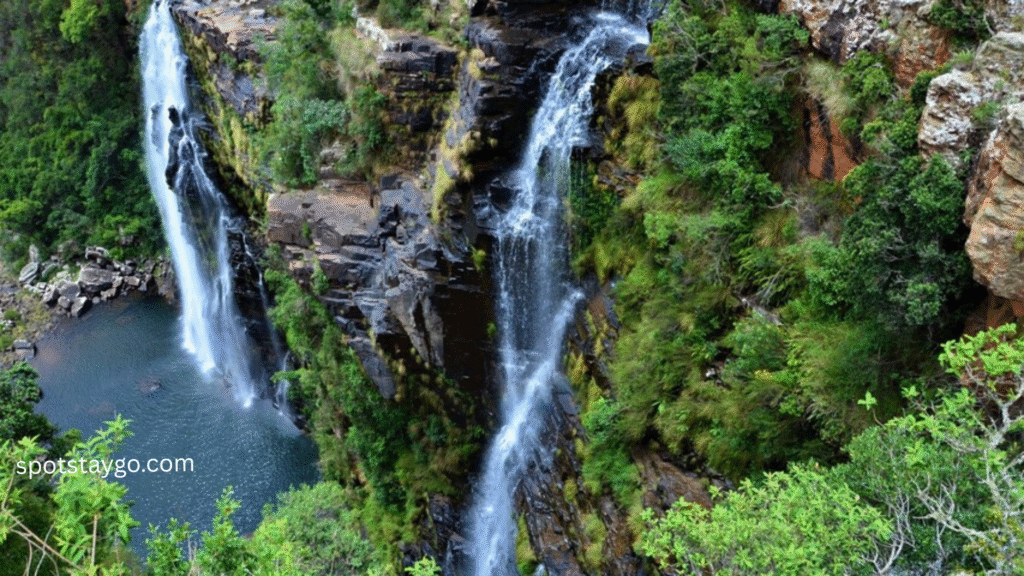
Lisbon Falls is a magnificent waterfall located in the Mpumalanga province of South Africa. It is situated on the Lisbon Creek, a right-bank tributary of the Blyde River. The falls lie just north of Graskop, along the R532 route, and are considered the tallest waterfall in Mpumalanga, with a height of approximately 94 meters (308 feet). They are named after the nearby Lisbon Creek and Lisbon Farm, where the falls are located.
Although Lisbon Falls is close to the popular God’s Window viewpoint, it lies just outside the boundaries of the Blyde River Canyon Nature Reserve, much like other nearby waterfalls such as Berlin Falls, Lone Creek Falls, and Mac Mac Falls.
Visitors often include Lisbon Falls as part of the Panorama Route, one of the most scenic and popular driving routes in the region, offering breathtaking views and unforgettable natural beauty.
4. Mac-Mac Falls-
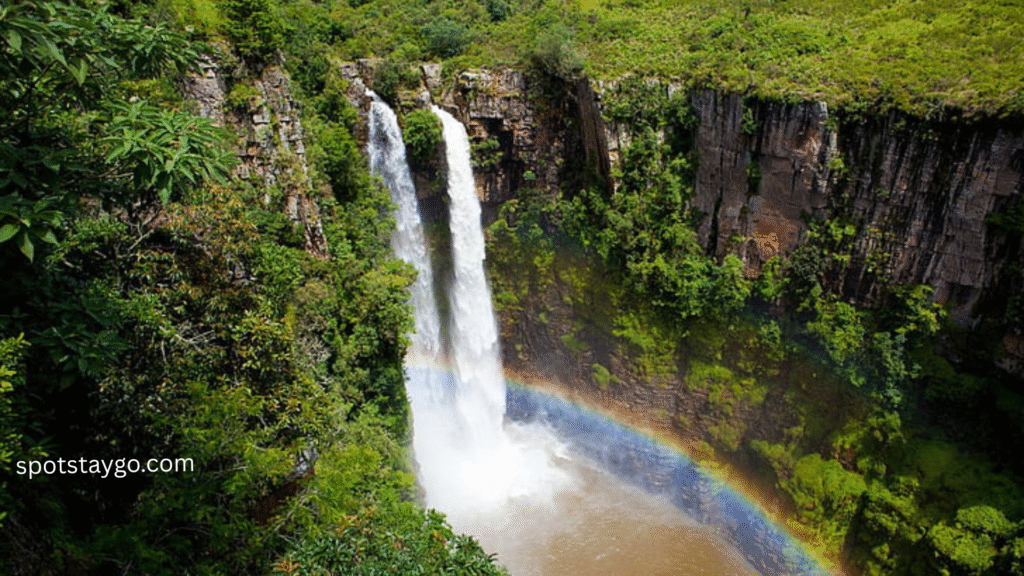
Mac-Mac Falls is a stunning waterfall located in the Mpumalanga province of South Africa, within the Mac-Mac Forest Nature Reserve. It lies on the Mac-Mac River and has an impressive height of approximately 65 meters (213 feet).
Originally, the waterfall had a single stream, but during the gold rush era, miners used dynamite on the surrounding rocks in hopes of exposing gold-rich deposits. As a result, the waterfall now splits into two separate streams, cascading side by side and creating a distinctive and picturesque view.
On 18 February 1983, Mac-Mac Falls, along with the indigenous forest located in the kloof below it, was officially declared a provincial heritage site.
5. Berlin Falls-
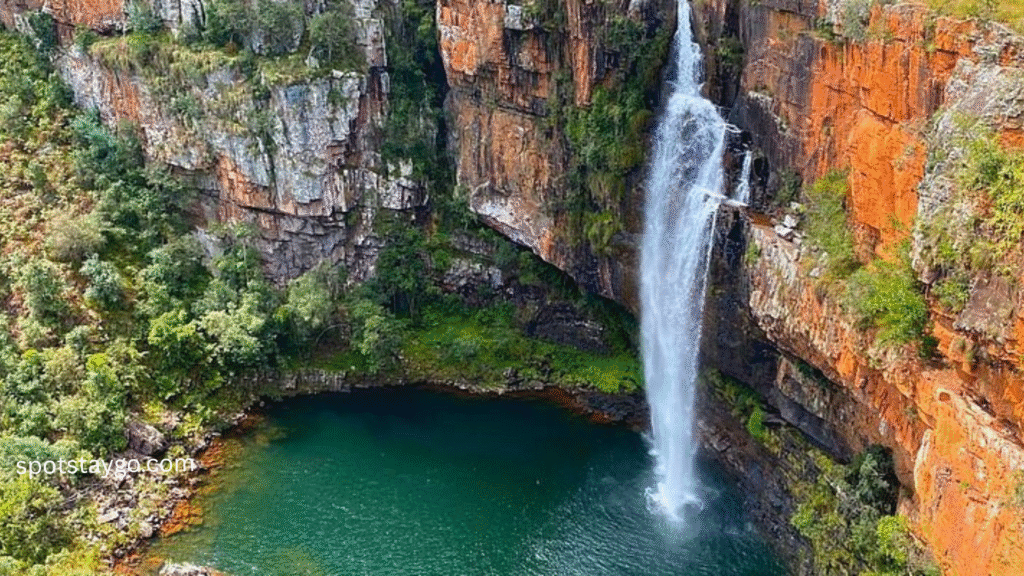
Berlin Falls is a picturesque waterfall located in the Mpumalanga province of South Africa, near the famous God’s Window. Although it is not the tallest waterfall in the region—that title belongs to the Lisbon Falls—Berlin Falls is especially renowned for its natural beauty and breathtaking scenery. Its height is less than one-tenth that of Tugela Falls, the tallest waterfall in South Africa.
Situated along the Panorama Route, Berlin Falls is part of the Blyde River Canyon area. Located in the Sabie region, it is one of several stunning waterfalls found in the area. Other notable waterfalls nearby include Horseshoe Falls, Lone Creek Falls, Bridal Veil Falls, Mac-Mac Falls, and the tallest in Mpumalanga, the Lisbon Falls.
6. Bridal Veil Falls-
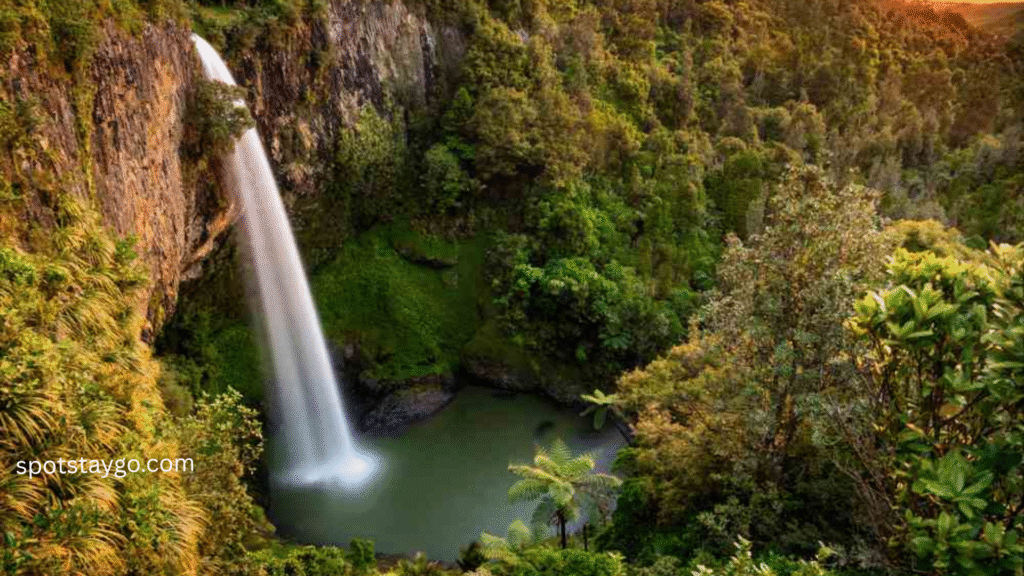
Bridal Veil Falls is a beautiful waterfall located in Multnomah County in the state of Oregon, USA. It lies along Bridal Veil Creek, which flows through the Columbia River Gorge. The waterfall is easily accessible, as it is located near the Historic Columbia River Highway and Interstate 84 (I-84).
This waterfall cascades over basalt rock in two distinct tiers and is the only waterfall that flows directly beneath the Historic Columbia Gorge Scenic Highway. The Bridal Veil Falls Bridge, constructed in 1914, spans this waterfall and is listed on the National Register of Historic Places.
Bridal Veil Falls drops in two main stages — an upper falls and a lower falls — with a total height of approximately 118 feet (36 meters). The two-tiered drop is due to a layer of easily erodible basalt located at the base of the upper falls. Additionally, a large basalt boulder, which once broke away from the cliff, now rests in the creek below near the plunge pool, adding to the scenic beauty of the falls.
7. Debengeni Waterfall-
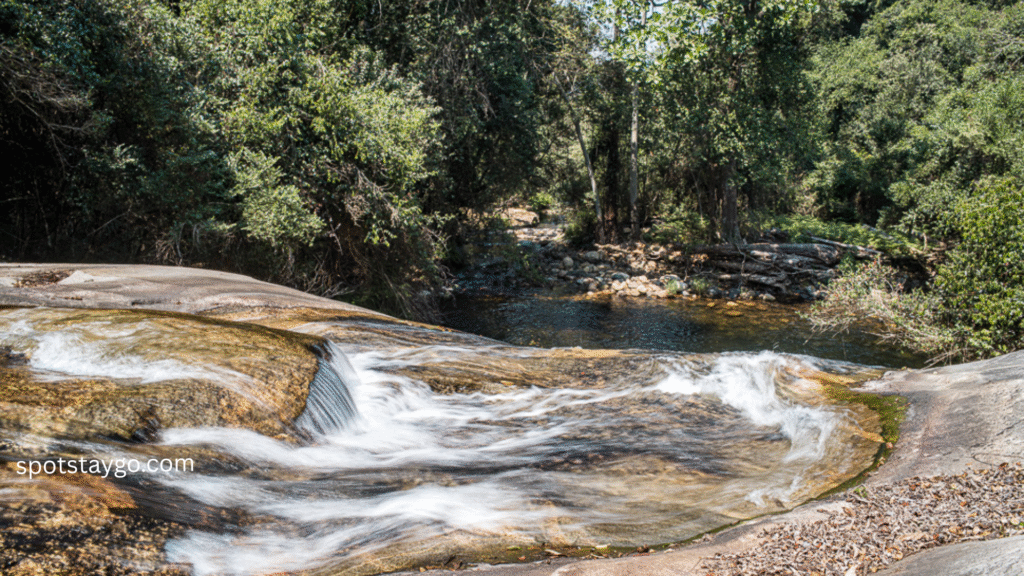
Debengeni Falls is a beautiful and popular waterfall located in the Limpopo Province of South Africa. It lies in the northeastern part of the country, approximately 280 kilometers northeast of the capital, Pretoria. The waterfall is situated at an elevation of around 978 meters above sea level.
The area surrounding Debengeni Falls is hilly and naturally scenic. The highest point in the vicinity rises to about 1,252 meters (approximately 4,000 feet) above sea level and is located roughly 1 kilometer (0.6 miles) west of the falls.
This region is considered to be relatively densely populated, with an estimated 75 people per square kilometer. The nearest major town is Tzaneen, located about 13.7 kilometers (8.5 miles) east of Debengeni Falls.
The area around the waterfall is heavily forested and lush, making it an especially attractive natural tourist destination.
8. Magwa Falls-
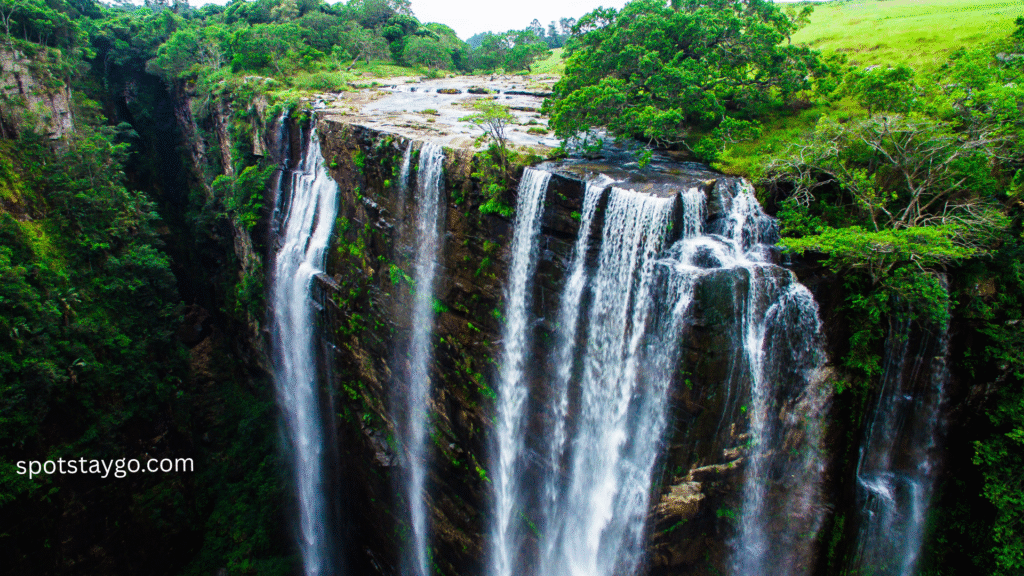
Magwa Falls is a waterfall located in the Eastern Cape province of South Africa. Its main stream plunges from a height of 142 meters (466 feet). The nearest town to the falls is Lusikisiki.
Magwa Falls is nestled in the heart of the 1,800-hectare Magwa Tea Plantation, which lies just outside Lusikisiki and is considered South Africa’s last remaining tea estate.
The waterfall is truly impressive. It is one of the few waterfalls along the rugged Wild Coast that is relatively easy to access — most others require difficult treks and are only seen by the most adventurous travelers.
Magwa Falls drops dramatically into a narrow gorge, formed by seismic activity — sudden shifts in the Earth’s crust due to geological faults or volcanic movement.
Although it is much smaller in scale, Magwa Falls bears a resemblance to Zimbabwe’s famous Victoria Falls, making it a must-see natural wonder in the region.
9. Kalandula Falls-
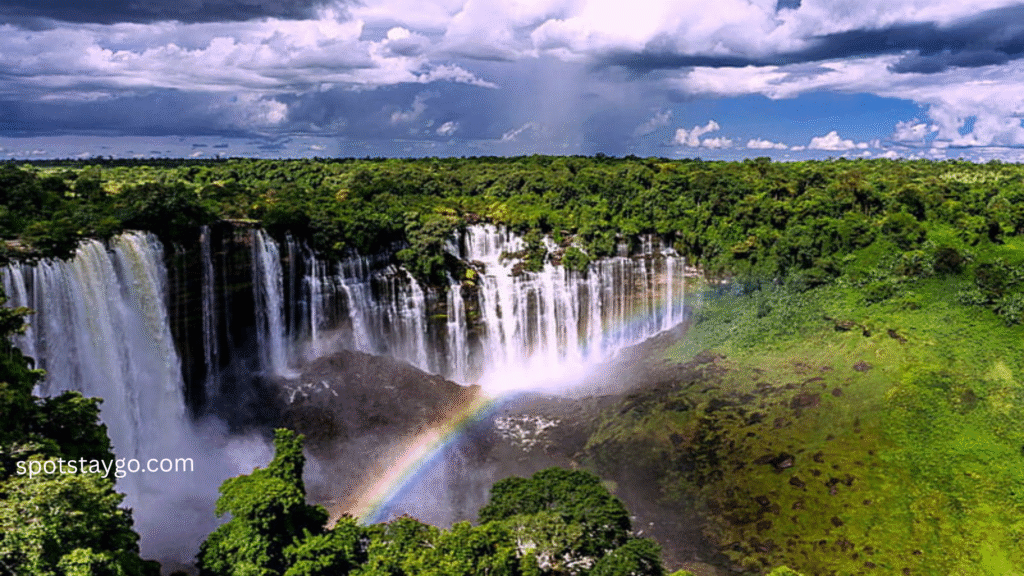
Calandula Falls, also known as Kalandula Falls, was formerly known as the Duke of Braganza Falls. It is a majestic waterfall located in the Calandula municipality of Malanje Province in Angola.
Situated on the Lucala River, the waterfall has an approximate height of 105 meters (344 feet) and a width of about 400 meters (1,300 feet). It is considered one of the largest and most impressive waterfalls in Africa.
Calandula Falls is located around 360 kilometers from Luanda, the capital of Angola, and the area is renowned for its natural beauty and scenic charm.
10. Howick Falls-
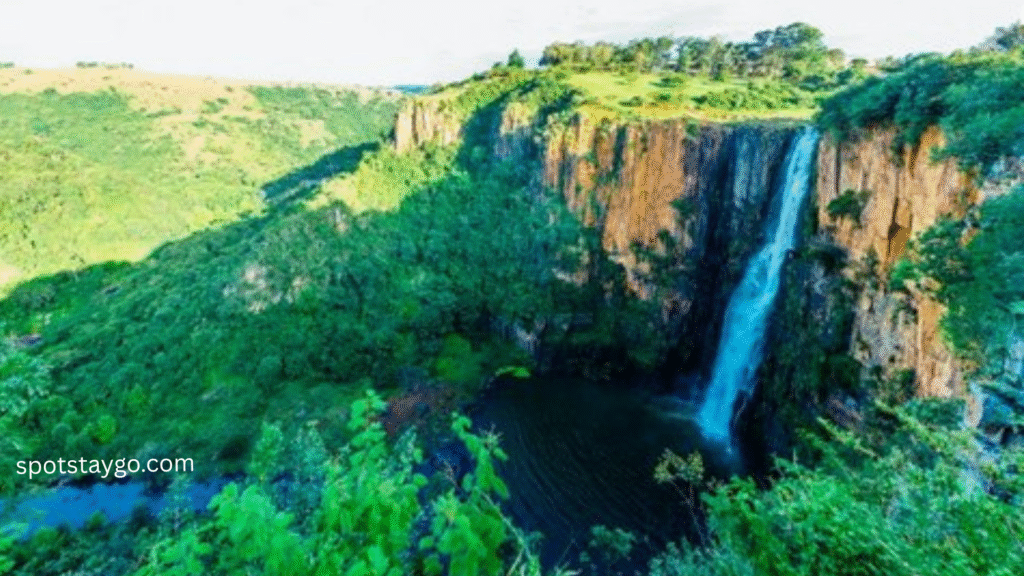
Howick Falls is a beautiful and prominent waterfall located in the town of Howick, in the KwaZulu-Natal province of South Africa. This waterfall is situated on the Umgeni River and has a height of approximately 95 meters (310 feet).
The local Zulu community traditionally referred to the waterfall as “KwaNogqaza,” which means “Place of the Tall One.” This name reflects the cultural and mythological significance of the site.
The KwaZulu-Natal region has been home to humans for over 30,000 years, and the rich folklore and legends associated with this area make it a place of great historical value. KwaNogqaza was considered a sacred and well-known location long before the arrival of any Western influences.
11. Bawa Falls-
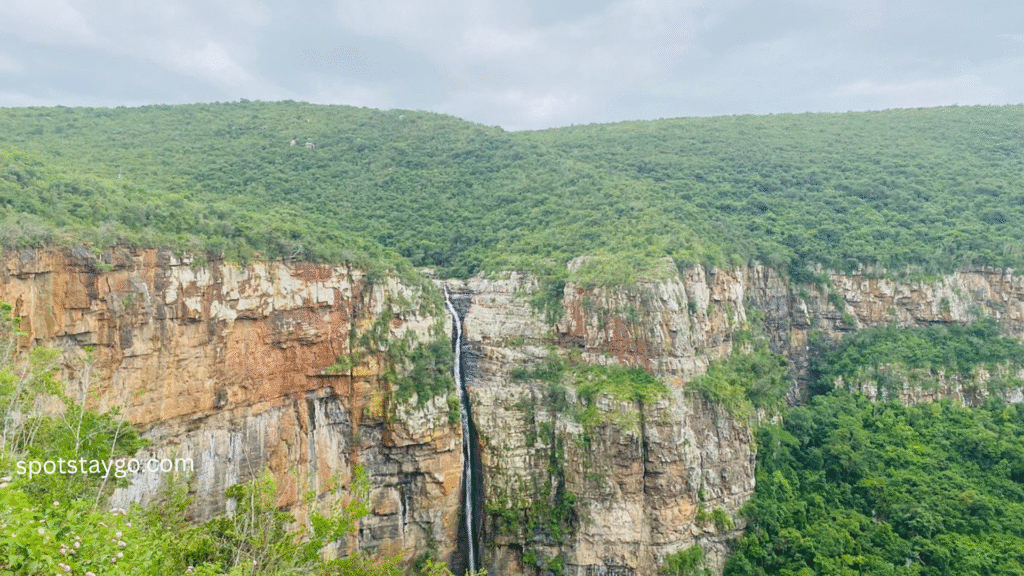
Bawa Falls is a picturesque, horse-tail shaped waterfall located in the Transkei region of the Eastern Cape province of South Africa. The waterfall has an approximate height of 103 meters (338 feet) and an average width of about 1.5 meters (5 feet).
It is situated near the village of KwaNdotshanga, close to Butterworth, on a western tributary of the Gxaku River, which in turn is a northern tributary of the Great Kei River.
12. Ouzoud Falls-
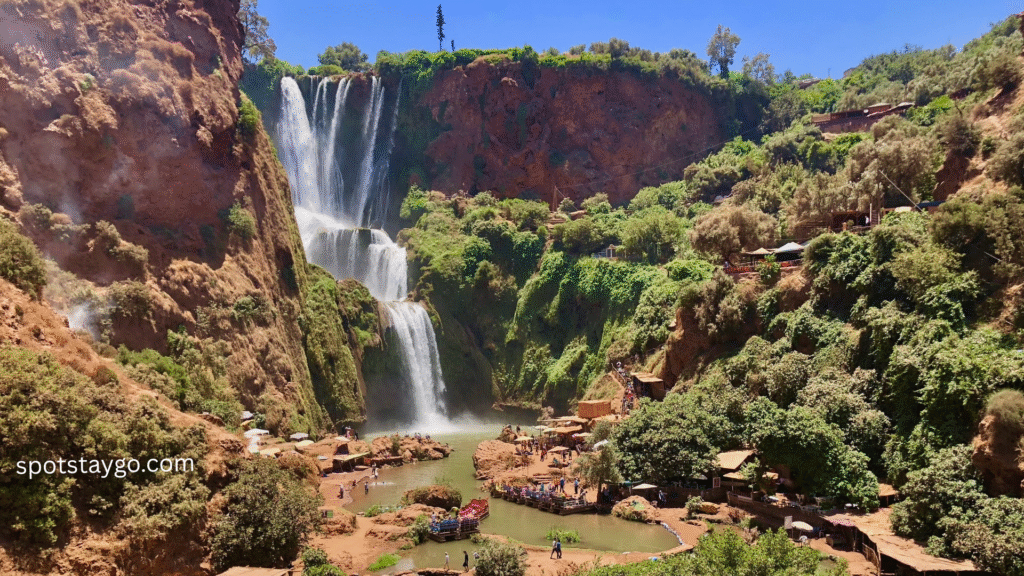
Ouzoud Waterfalls is the collective name for several waterfalls located in the Azilal Province of Morocco. These waterfalls cascade into the valley of the Al-Abid River, whose name translates to “River of Slaves” in Arabic.
This site is a popular tourist destination, situated approximately 36 kilometers (22 miles) from the city of Azilal and about 150 kilometers (93 miles) from Marrakesh.
In the Berber language, the word “Ouzoud” means “the act of grinding grain”, reflecting the traditional lifestyle and cultural significance of the region.
South Africa Safari Supreme 2025
